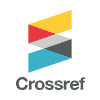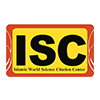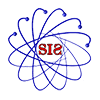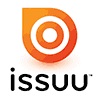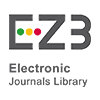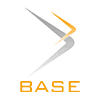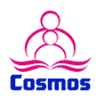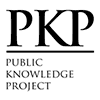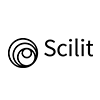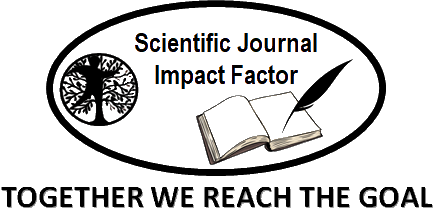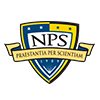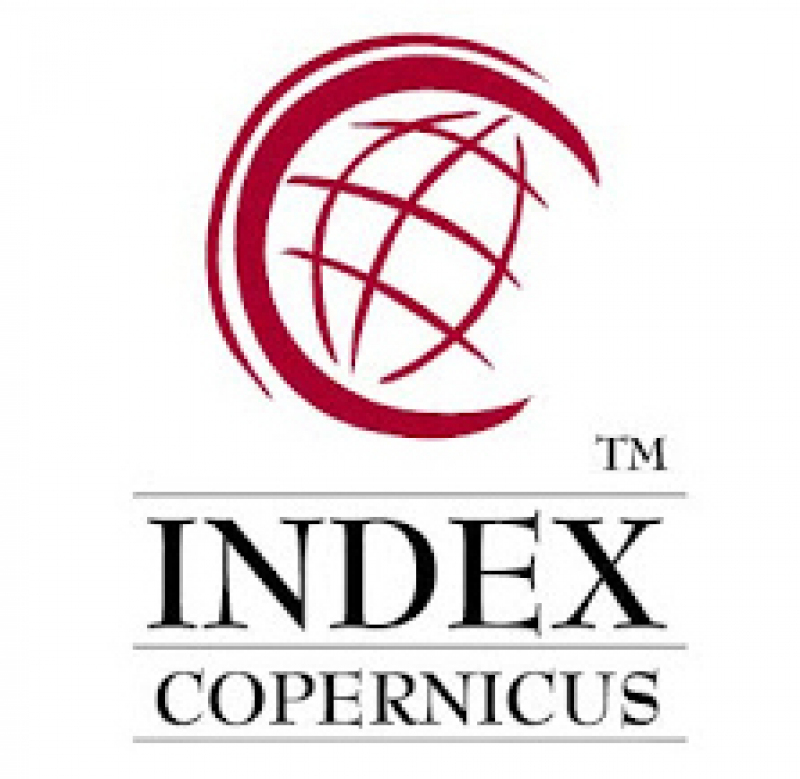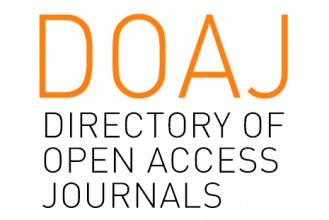Effectiveness of Problem Based Learning Model with Cognitive Conflict Strategy (PBL-CCS) in terms of Students' Mathematical Literacy and Mathematical Communication Skills
Abstract
The research aims to describe: (1) effectiveness of the PBL-CCS model in terms of students' mathematical literacy and communication skills, (2) effectiveness of the DI model in terms of students' mathematical literacy and communication skills, and (3) superiority of the PBL-CCS model compared to the DI model in terms of students' mathematical literacy and communication skills. The type of research used is a quasi-experimental study conducted at SMA Negeri 1 Padang Bolak. The population consists of all 10th-grade students. The sample is classes X-3 and X-5. The data collection technique used is pretests and posttests on mathematical literacy and communication skills. The research instruments were validated by experts and proven reliable. The statistical tests used are: One Sample t-Test to determine the effectiveness of the learning models, Hotelling’s T² test to examine the difference in effectiveness, and Two Independent Sample t-Test to compare the two learning models for each dependent sample, followed by a superiority test. The research results indicate that: (1) the PBL-CCS model is effective in terms of students' mathematical literacy and communication skills, (2) the DI model is not effective in terms of students' mathematical literacy and communication skills, and (3) the PBL-CCS model is superior to the DI model in terms of students' mathematical literacy skills, but the PBL-CCS model is not superior to the DI model in terms of students' mathematical communication skills.
Keywords
Full Text:
PDFReferences
Arends, R. I. (2012). Learning to teach (9th ed.). McGraw-Hill.
Argarini, D. F., Yazidah, N. I., & Kurniawati, A. (2020). The construction learning media and level of students’ mathematical communication ability. Infinity Journal, 9(1), 1–14. https://doi.org/10.22460/infinity.v9i1.p1-14.
AS, R. C., Masykur, R., & Andriani, S. (2020). Efektifitas pembelajaran peer led guided inquiry untuk peningkatan kemampuan komunikasi matematis ditinjau dari number smart. AKSIOMA: Jurnal Program Studi Pendidikan Matematika, 9(3), 681. https://doi.org/10.24127/ajpm.v9i3.2719.
Asmara, A. S., Waluya, S. B., Suyitno, H., Junaedi, I., & Ardiyanti, Y. (2024). Developing patterns of students’ mathematical literacy processes: Insights from cognitive load theory and design-based research. Infinity Journal, 13(1), 197–214. https://doi.org/10.22460/infinity.v13i1.p197-214.
Baroody, A. J., & Coslick, R. T. (1993). Problem solving, reasoning, and communicating, K-8 helping children think mathematically.
Barrett, T. (2017). A new model of problem-based learning: Inspiring concepts, practice strategies and case studies form higher education. All Ireland Society for Higher Education (AISHE).
Boye, E. S., & Agyei, D. D. (2023). Effectiveness of problem-based learning strategy in improving teaching and learning of mathematics for pre-service teachers in Ghana. Social Sciences and Humanities Open, 7(1), 1–7. https://doi.org/10.1016/j.ssaho.2023.100453.
Burkhardt, H., Pead, D., & Stacey, K. (2024). Learning and teaching for mathematical literacy: Making mathematics useful for everyone. Routledge. https://doi.org/10.4324/9781003303503-2.
Chasanah, C., Riyadi, & Usodo, B. (2020). The effectiveness of learning models on written mathematical communication skills viewed from students’ cognitive styles. European Journal of Educational Research, 9(3), 979–994. https://doi.org/10.12973/EU-JER.9.3.979.
Chrisdiyanto, E., Hamdi, S., Jailani, J., & Nur Cahyanti, M. (2023). Efektivitas problem-based learning dengan model NHT berbantuan sempoa untuk meningkatkan hasil belajar siswa SMP. AKSIOMA: Jurnal Program Studi Pendidikan Matematika, 12(1), 669. https://doi.org/10.24127/ajpm.v12i1.6746.
Christensen, L. B., Johnson, B., & Turner, L. A. (2015). Research methods, design, and analysis. Pearson Education.
Creswell, J. W. (2012). Educational research (4th ed.). Pearson.
Harisman, Y., Mayani, D. E., Armiati, Syaputra, H., & Amiruddin, M. H. (2023). Analysis of student’s ability to solve mathematical literacy problems in junior high schools in the city area. Infinity Journal, 12(1), 55–68. https://doi.org/10.22460/infinity.v12i1.p55-68.
Herawaty, D., & Rusdi, R. (2016). Increased capacity of the understanding of the concept and the ability to solve problems through the implementation of the model of teaching mathematics realistic based on cognitive conflict students. Infinity Journal, 5(2), 109. https://doi.org/10.22460/infinity.v5i2.217.
Johar, R., Wahyuna, A., Maidiyah, E., Rahmayani, R. F., & Harnita, F. (2022). Development of numeracy problems with the context of herbal medicines in junior high school. Jurnal Didaktik Matematika, 9(2), 280–297. https://doi.org/10.24815/jdm.v9i2.27783.
Kaya, D., & Aydin, H. (2016). Elementary mathematics teachers’ perceptions and lived experiences on mathematical communication. Eurasia Journal of Mathematics, Science and Technology Education, 12(6), 1619–1629. https://doi.org/10.12973/eurasia.2014.1203a.
Kusmaryono, I., Aminudin, M., & Kartinah. (2022). The role of equilibration in the formation of cognitive structures in mathematics learning. Infinity Journal, 11(2), 311–324. https://doi.org/10.22460/infinity.v11i2.p311-324.
Kusmaryono, I., Aminudin, M., Ubaidah, N., & Chamalah, E. (2024). The bridging understanding of language and mathematical symbols between teachers and students: An effort to increase mathematical literacy. Infinity Journal, 13(1), 251–270. https://doi.org/10.22460/infinity.v13i1.p251-270.
Laamena, C. M., Mataheru, W., & Hukom, F. F. (2021). Perbedaan hasil belajar siswa kelas VIII SMP menggunakan model problem based learning (PBL) berbantuan aplikasi swishmax dan model pembelajaran konvensional pada materi prisma dan limas. BAREKENG: Jurnal Ilmu Matematika Dan Terapan, 15(1), 029–036. https://doi.org/10.30598/barekengvol15iss1pp029-036.
Laerd. (2018). One-way MANOVA in SPSS Statistics. Lund Research Ltd. https://statistics-laerd-com.translate.goog/spss-tutorials/one-way-manova-using-spss-statistics.php.
Lee, G., Kwon, J., Park, S. S., Kim, J. W., Kwon, H. G., & Park, H. K. (2003). Development of an instrument for measuring cognitive conflict in secondary-level science classes. Journal of Research in Science Teaching, 40(6), 585–603. https://doi.org/10.1002/tea.10099.
Maharani, I. P., & Subanji, S. (2018). Scaffolding based on cognitive conflict in correcting the students’ algebra errors. International Electronic Journal of Mathematics Education, 13(2). https://doi.org/10.12973/iejme/2697.
Marniati, M., Jahring, J., & Jumriani, J. (2021). Analisis kemampuan komunikasi matematis siswa dalam memecahkan masalah berdasarkan motivasi belajar siswa. AKSIOMA: Jurnal Program Studi Pendidikan Matematika, 10(2), 880. https://doi.org/10.24127/ajpm.v10i2.3523.
Mufit, F., Asrizal, Puspitasari, R., & Annisa. (2022). Cognitive conflict-based e-book with real experiment video analysis integration to enhance conceptual understanding of motion kinematics. Jurnal Pendidikan IPA Indonesia, 11(4), 626–639. https://doi.org/10.15294/jpii.v11i4.39333.
Mufit, F., Festiyed, F., Fauzan, A., & Lufri, L. (2018). Impact of learning model based on cognitive conflict toward student’s conceptual understanding. IOP Conference Series: Materials Science and Engineering, 335(1). https://doi.org/10.1088/1757-899X/335/1/012072.
NCTM. (2000). Principle and standards for school mathematics. VA:NCTM.
Ningsih, S. W., Sugiman, S., Merliza, P., & Ralmugiz, U. (2020). Keefektifan model pembelajaran CORE dengan strategi konflik kognitif ditinjau dari prestasi belajar, berpikir kritis, dan self-efficacy. Pythagoras: Jurnal Pendidikan Matematika, 15(1). https://doi.org/10.21831/pg.v15i1.34614.
Nuraida, I., & Amam, A. (2019). Hypothetical learning trajectory in realistic mathematics education to improve the mathematical communication of junior high school students. Infinity Journal, 8(2), 247–258. https://doi.org/10.22460/infinity.v8i2.p247-258.
Nurun, Z., Im, N. ’, & Mukhlis, M. (2024). Exploration of students’ mathematical communication abilities. Jurnal Riset Pendidikan Matematika, 11(1), 41–52. https://doi.org/10.21831/jrpm.v11i1.66639.
OECD. (2019). Assessment and analytical framework. OECD. https://doi.org/10.1787/b25efab8-en.
Ojose, B. (2011). Mathematics literacy: Are re able to put the mathematics we learn into everyday use? Journal of Mathematics Education, 4(1), 89–100.
Partnership for 21st Century Skills. (2019). Framework for 21st century learning definitions. http://static.battelleforkids.org/documents/p21/P21_Framework_DefinitionsBFK.pdf.
Parwati, N. N., & Suharta, I. G. P. (2020). Effectiveness of the implementation of cognitive conflict strategy assisted by e-service learning to reduce students’ mathematical misconceptions. International Journal of Emerging Technologies in Learning, 15(11), 102–118. https://doi.org/10.3991/IJET.V15I11.11802.
Prihatiningtyas, N. C., & Buyung, B. (2023). Kemampuan literasi matematis siswa melalui implementasi model problem-based learning berbasis etnomatematika pada budaya Tidayu. AKSIOMA: Jurnal Program Studi Pendidikan Matematika, 12(1), 215. https://doi.org/10.24127/ajpm.v12i1.5297.
R Core Team. (2022). R: A language and environment for statistical computing (4.2.2). R Foundation for Statistical Computing. https://www.R-project.org/.
Rachma, A. A., & Rosjanuardi, R. (2021). Students’ obstacles in learning sequence and series using onto-semiotic approach. Jurnal Pendidikan Matematika, 15(2), 115–132. https://doi.org/10.22342/jpm.15.2.13519.115-132.
Rachmawati, L. N., Cholily, Y. M., & Zukhrufurrohmah. (2021). Mathematics communication mistakes in solving HOTS problems. Infinity Journal, 10(1), 69–80. https://doi.org/10.22460/infinity.v10i1.p69-80.
Rohid, N., Suryaman, S., & Rusmawati, R. D. (2019). Students’ mathematical communication skills (MCS) in solving mathematics problems: A case in Indonesian context. Anatolian Journal of Education, 4(2), 19–30. https://doi.org/10.29333/aje.2019.423a.
RStudio Team. (2020). RStudio: Integrated development for R. In RStudio, PBC (2022.12.0+353). RStudio. http://www.rstudio.com/.
Schunk, D. H. (2012). Learning theories: An educational perspective. Pearson.
Septiadi, D. D. (2022). The mathematical literacy ability of level 3 students in solving PISA-liked problems at mathematics-class program of MAN 1 Jember. MATHEMA JOURNAL , 4(1), 13–27. https://doi.org/https://doi.org/10.33365/jm.v4i1.1519.
Setiyani, S., Waluya, S. B., Sukestiyarno, Y. L., Cahyono, A. N., & Dwi Santi, D. P. (2024). Assessing numeracy skills on flat shapes and scaffolding forms in junior high school. International Journal of Evaluation and Research in Education (IJERE), 13(1), 422. https://doi.org/10.11591/ijere.v13i1.25186.
Siagian, Q. A., Aswin, & Herman, T. (2023). Praxeological analysis of mathematics textbooks for class XI high school students on arithmetic and geometric sequences. Eduma: Mathematics Education Learning and Teaching, 12(2), 139–152. https://doi.org/10.24235/eduma.v12i2.13.
Sugianto, R., Syaifuddin, M., & Cholily, Y. M. (2022). Development of E-LKPD oriented minimum competency assessment (MCA) on 6C’s ability of high school students. Al-Jabar: Journal of Mathematics Education, 13(2), 433–454. https://doi.org/http://dx.doi.org/10.24042/ajpm.v13i2.15559
Sukmawati, K. I. (2018). The implementation of progressive mathematization model as a mean to enhance understanding and communication ability of junior high school students. Jurnal Riset Pendidikan Matematika, 5(1), 30–42. https://doi.org/10.21831/jrpm.v5i1.16056
Susanta, A., Sumardi, H., & Susanto, E. (2022). Students’ mathematical literacy ability in solving problems on pattern material using the Bengkulu local contexts. Jurnal Didaktik Matematika, 9(2), 343–357. https://doi.org/10.24815/jdm.v9i2.26741.
Tunde, J., & Listiani, T. (2021). The implementation of direct instruction assisted by incomplete handout to increase conceptual understanding. Journal of Physics: Conference Series, 1806(1). https://doi.org/10.1088/1742-6596/1806/1/012067.
Umbara, U., & Nuraeni, Z. (2019). Implementation of realistic mathematics education based on adobe flash professional CS6 to improve mathematical literacy. Infinity Journal, 8(2), 167–178. https://doi.org/10.22460/infinity.v8i2.p167-178.
Verschaffel, L., Dooren, W. Van, & Smedt, B. De. (2012). Mathematical learning. In Encyclopedia of the Sciences of Learning. Springer US. https://doi.org/10.1007/978-1-4419-1428-6.
Wati, K., Maison, M., & Syaiful, S. (2024). Analisis kemampuan berpikir kritis matematis dan kreatif matematis dalam pemecahan masalah pada siswa introvert. AKSIOMA: Jurnal Program Studi Pendidikan Matematika, 13(1), 176. https://doi.org/10.24127/ajpm.v13i1.8151.
Widia, W., Suhirman, S., Suhardi, M., Prayogi, S., Yamin, M., Salahuddin, M., Haryanto, L., Ewisahrani, E., E Nursa’ban, E. N., Ilyas, I., & Mujitahid, M. (2022). Effect of cognitive conflict strategies on students’ cognitive learning outcomes. Jurnal Penelitian Pendidikan IPA, 8(1), 388–392. https://doi.org/10.29303/jppipa.v8i1.1308.
Wulandari, T., & Kartowagiran. (2020). The effectiveness of conventional and inquiry learning methods in improving student learning achievement. Journal of Physics: Conference Series, 1–5. https://doi.org/10.1088/1742-6596/1511/1/012118.
Zetriuslita, Z., Wahyudin, W., & Dahlan, J. A. (2018). Association among mathematical critical thinking skill, communication, and curiosity attitude as the impact of problem-based learning and cognitive conflict strategy (PBLCCS) in number theory course. Infinity Journal, 7(1), 15–24. https://doi.org/10.22460/infinity.v7i1.p15-24.
DOI: http://dx.doi.org/10.18415/ijmmu.v12i6.6783
Refbacks
- There are currently no refbacks.
Copyright (c) 2025 International Journal of Multicultural and Multireligious Understanding

This work is licensed under a Creative Commons Attribution-NonCommercial-NoDerivatives 4.0 International License.
https://ijmmu.com
editor@ijmmu.com
facebook.com/ijmmu
Copyright © 2014-2018 IJMMU. All rights reserved.






